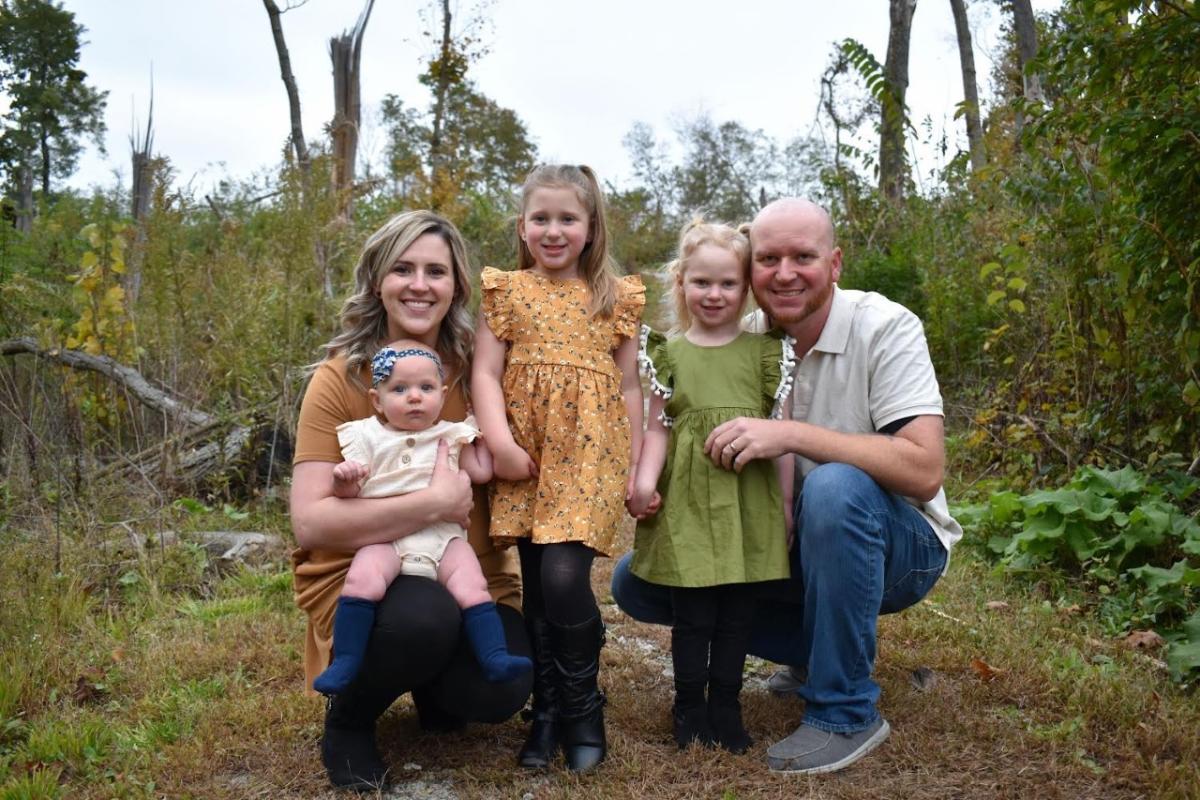patient story
Cora Jones
Cora conquers complex conditions
 Most times, a routine anatomy scan during pregnancy is exactly that - routine. It’s an opportunity for prenatal care providers to make sure the baby is healthy and growing properly. When Tiffany Jones was 32-weeks pregnant, she went in for an anatomy scan because baby Cora had been measuring big for her gestational age. During the scan, the ultrasound technician said, “hold on, let me get a doctor,” words that instantly sent chills down Tiffany’s spine.
Most times, a routine anatomy scan during pregnancy is exactly that - routine. It’s an opportunity for prenatal care providers to make sure the baby is healthy and growing properly. When Tiffany Jones was 32-weeks pregnant, she went in for an anatomy scan because baby Cora had been measuring big for her gestational age. During the scan, the ultrasound technician said, “hold on, let me get a doctor,” words that instantly sent chills down Tiffany’s spine.
When the doctor walked in, he explained that Cora’s left kidney had a kink in the ureter. This is a condition formally known as ureteropelvic junction obstruction (UPJ). UPJ is a congenital defect that occurs when the normal flow of urine is slowed or stopped because of a kink or narrowing of the ureter. Many cases can resolve on their own before 18 months of age, but some babies require surgery to prevent any further damage to the kidney. Cora would need more tests once she was born to understand how effectively her urine would drain.
Six weeks later, Tiffany was induced, and Cora was born. Fully prepared to embrace Cora’s kidney concerns, Tiffany was not expecting another issue to arise. When Cora was born, her heart rate was 240 bpm (beats per minute), which is exceptionally high, even for a newborn. Luckily, Cora’s care team was able to get her heart rate under control rather quickly.
After giving everyone a brief scare, Cora’s heart rate continued to beat at a safe rate, allowing her to go home.
continued concerns at home
Cora’s health concerns continued at home. Her bilirubin levels elevated beyond an acceptable range, and she became very jaundice. Dayton Children’s Home Care brought a biliblanket to their house for Cora to wear overnight. A biliblanket provides light therapy to the skin, changing the bilirubin to a form that can easily pass out of the body. When Home Care returned for the biliblanket, they did a blood draw and determined Cora’s bilirubin levels had improved.
Although Cora’s bilirubin levels had shown improvement, her overall health seemed to be declining. When she was 9 days old, Tiffany noticed Cora had been sleeping for a long time, she was lethargic and difficult to wake. Additionally, she was running a high fever. Tiffany called Cora’s pediatrician who advised her to hang up the phone and go to the emergency department immediately.
After arriving at Dayton Children’s Hospital emergency department, Tiffany was overwhelmed with emotions. Because Cora was so young and no one knew what was wrong with her, she was taken into a trauma room. As a Level 1 Pediatric Trauma Center, Dayton Children’s is capable of caring for the most critical cases, usually involving injury, but also cases like Cora’s where she required a fast response time.
“There were so many nurses and doctors running test after test on Cora trying to understand what was going on,” said Tiffany. “With every ping of my phone, I knew another test result was available in MyKidsChart, but I couldn’t bring myself to look.”
Cora’s urine tested positive for a urinary tract infection (UTI) with E. coli cultures present. This type of diagnosis was an automatic ten day stay in the neonatal intensive care unit (NICU).
an unexpected trio
Once in the NICU, Tiffany informed Cora’s care team of her kinked ureter and potential for reflux. Thinking there could be a connection between her UTI and the kinked ureter, Cora’s care team continued to run a variety of tests and imaging.
During an ultrasound, it was discovered that Cora had not two, but three kidneys. Two on the left and one on the right. One of her left kidneys was draining into her bladder like it is supposed to do, and the other was draining directly into her vagina.
A voiding cystourethrogram (VCUG) was performed to look at Cora’s bladder and kidney functions. According to KidsHealth, during a VCUG, the patient’s bladder is filled with a liquid contrast material. Then, images of the bladder and kidneys are taken as the bladder fills and also while the patient urinates. During Cora’s VCUG she was diagnosed with a condition called vesicoureteral reflux, a defect of the ureters that allows urine to flow the wrong way, often causing UTIs.
return of the rapid heartbeat
Feeling as if Cora’s treatment plan was heading in the right direction, Tiffany decided to take a break and have dinner at home with her family. Just as they sat down to eat, Tiffany received a call from the hospital. While Cora’s nurse was feeding her a bottle, her heart rate spiked to 360 bpm. A rate so high, her nurse was in disbelief. After cooling her body with ice packs and giving her medication to slow her heart rate, Cora’s vitals returned to normal.
The next day, Michael Ralston, MD, pediatric cardiologist came to talk to Tiffany. He explained that Cora went into supraventricular tachycardia (SVT) which is an arrhythmia or rapid heartbeat. SVT is the most common type of heart arrhythmia seen in infants and children, and many times children grow out of it. Dr. Ralston took the extra step and drew a picture of Cora’s heart to better explain how she has an extra pathway and how it causes the blood in her heart to go around like a racetrack instead of a figure eight. He also explained that she would need to be started on medication to regulate her heart rate, and a heart monitor would need to be worn at home to make sure her heart wasn’t going into SVT again.
calmer days ahead
After being discharged from the NICU, Cora had a follow-up appointment to discuss her kidneys with Donald Nguyen, MD, pediatric urologist at Dayton Children’s. Dr. Nguyen explained to Tiffany that Cora would need to be on antibiotics for the first year of her life and when she was old enough, he would perform a function test on her two left kidneys to determine next steps.
Cora was 2-months-old when she had the function test. Both of her left kidneys were functioning, and Dr. Nguyen recommended they do not remove either of them. Instead, he suggested a ureteroureterostomy (UU), a surgery technique used to reposition the ureters in a way that prevents reflux.
Just two months later, Cora underwent surgery to reposition her ureters. Ideally, the surgery would have happened when she was older, but Cora was having UTIs so frequently that it couldn’t be put off any longer. In fact, she even had a UTI the day of her surgery.
living with three kidneys
Since having surgery, Cora has been doing really well. Right before her first birthday, she had another VCUG to look at her kidney and bladder function and she passed with flying colors. At that point, Dr. Nguyen took Cora off antibiotics. Cora is not expected to need any additional surgery on her kidneys. She will continue to follow up with Dr. Nguyen once a year to repeat the VCUG. And best of all, she hasn’t had any more UTIs since coming off antibiotics.
Cora also follows up with Dr. Ralston for medication management of her SVT. What started as an appointment every month has now moved to every six months.
Looking at her now, you would never know Cora was so sick as an infant. She has a healthy appetite, she’s always on the move and she has been hitting all her developmental milestones.


